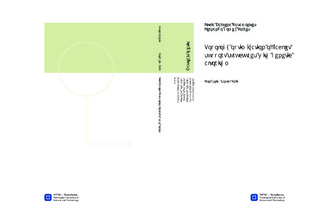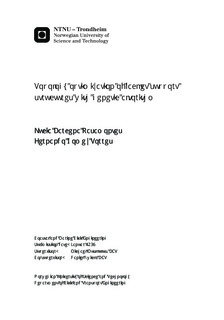| dc.contributor.advisor | Muskulus, Michael | nb_NO |
| dc.contributor.advisor | Zwick, Daniel | nb_NO |
| dc.contributor.author | Barcena Pasamontes, Lucia | nb_NO |
| dc.contributor.author | Gomez Torres, Fernando | nb_NO |
| dc.date.accessioned | 2014-12-19T11:33:09Z | |
| dc.date.available | 2014-12-19T11:33:09Z | |
| dc.date.created | 2014-04-26 | nb_NO |
| dc.date.issued | 2014 | nb_NO |
| dc.identifier | 714311 | nb_NO |
| dc.identifier | ntnudaim:10407 | nb_NO |
| dc.identifier.uri | http://hdl.handle.net/11250/232850 | |
| dc.description.abstract | This thesis is a study of the optimization of the support structure for offshore wind turbines with a genetic algorithm. The optimization of these structures plays an important role in the plan for reduction of the costs proposed for the coming years in the field of offshore wind energy.The support structure proposed to optimize in this study is based on the model designed for the OC4 project. This model consists of 4 legs and 4 levels of X-braces forming a lattice. The optimization proposed in this thesis is based on the minimization of the weigh and the damaget of the structure establishing as design variables the geometry (diameters and thickness of the beams) and topology (location nodes). Material properties will not change.In order to perform this task, a genetic algorithm has been implemented in Matlab (Version R2013a). The variables are converted into binary code in order to combine two different designs. The pairs of designs selected to be combined are chosen randomly within the population and after the combination, or crossed over, two new designs are generated. After that, the new designs are evaluated based on a fitness function (weight or damage) and selected again, based on the fitness value. This is an iterative process and finishes when an optimal design is found. Mutation and immigration operators are used in order to increase the variety in the search space.Every iteration, analysis of each design is performed with a complete wind turbine simulation for a loadcase in the time-domain. Data obtained from the simulation are used for stress calculation and checked fatigue and ultimate limits.These results demonstrate that automatic optimization of wind turbine support structures is feasible with a genetic algorithm, even for complex structures such us the one analyzed in this thesis. | nb_NO |
| dc.language | eng | nb_NO |
| dc.publisher | Institutt for bygg, anlegg og transport | nb_NO |
| dc.title | Topology optimization of jacket support structures with genetic altorithm | nb_NO |
| dc.type | Master thesis | nb_NO |
| dc.source.pagenumber | 154 | nb_NO |
| dc.contributor.department | Norges teknisk-naturvitenskapelige universitet, Fakultet for ingeniørvitenskap og teknologi, Institutt for bygg, anlegg og transport | nb_NO |

